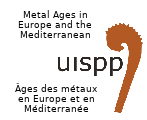The artifact record in Ireland and Northern Britain during the Bronze Age is rich in finds of extraordinary beauty and artisanal skill, yet upland settlement sites presenting reliable absolute dating can be elusive. Many sites have traditionally been dated through finds typology or relative dating and settlement patterns in upland areas have contradictions indicating simultaneous settlement expansion and contraction during periods of palynologically visible climate change. Understanding the response of past societies to major climate events has been prioritized in scholarship, however in most upland areas of Ireland and Northern Britain radiocarbon dates from domestic sites have not been compared against climate or land use indicators present in palynological studies across either regional or more global landscapes. This project focused on assessing radiocarbon dating and paleoenvironmental data to examine chronology by site type and make both localized and cross-Channel comparisons. Preliminary conclusions are presented showing that climate shifts - while adhering to wider generalized patterns also seen in Continental Europe - were highly regionalized, as were settlement and land use dynamics. |For sites that remain highly visible within the landscape, settlement and land use persisted on a highly localized basis despite climate shifts, and many display complex occupational chronologies that pre and post date the Bronze Age. The evidence remains insufficient to establish direct cause-and-effect for shifts in settlement or land use patterns before 750BC.

 PDF version
PDF version
